Vegan Globetrotter is supported by our audience. When you purchase through one of our links, we may earn a small affiliate commission. As an Amazon Associate I earn from qualifying purchases. Your cost is not affected.
==================
Types of Pasta Shapes: Many Shapes and Sizes to Choose
Most of us know the basic pasta shapes and sizes. Spaghetti noodles, a popular choice in most American families, are a great option for many baked dishes. However, have you ever considered trying a different type or interesting pasta shapes, like the big round noodles, ribbon shaped pasta, and corkscrew-shaped pasta, or unusual pasta shapes like the thickest pasta noodle, the pasta cylinder shape? If you’re curious about types of mixed pasta shapes, you’re in for a treat. Some people forget what to call the pasta and just ask, “What is that twirly pasta name?” How about experimenting with the largest pasta shape? Are you ready to try a different type of pasta?
Fresh Pasta vs. Dry Pasta
Is fresh pasta better than dried pasta? The answer is not quite so simple. Does it make a difference in the types of pasta shapes? We’ve discovered pros and cons to both. It depends, in large part,on your preferences. Fresh pasta often costs more to purchase. But many believe the richer taste and texture makes the extra expensive worth it. Less expensive, dried pasta cooks up more quickly in boiling water. This makes it a great choice for those quick meals. It also stores for a much longer time without spoiling. When making homemade pasta, you might prefer to use it as fresh pasta, rather than drying for future use. Dried pasta will keep for much longer and can save time when cooking. In fact, we often make enough to use as fresh and then dry extra for a future meal. The best of both worlds! For many, the controversy of fresh pasta versus dried comes down to availability. Groceries carry many types from the classic spaghetti noodles to fun shapes like shells and farfalle.
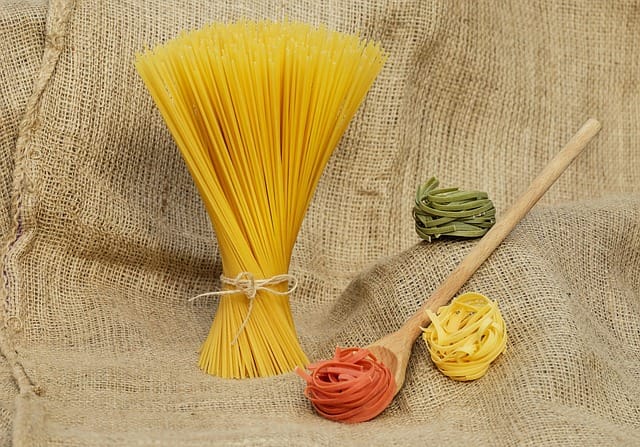
Most Popular Types of Pasta
We know of many popular pasta types around the world. Some of the most common pasta types include:
- Spaghetti
- Fettuccine
- Angel hair pasta
- Macaroni
- Fusilli
- Bow ties
- Penne pasta
- Lasagna noodles
- Shell pasta (large, small, mini sizes)
Delectable Pasta Types and Shapes
Pasta is a staple in many homes and restaurants, and for good reason. Not only is it versatile and delicious, but there are also countless types of pasta shapes and sizes to choose from. In this ultimate guide, we’ll discuss 17 different types of pasta noodles and the best ways to enjoy them. From the history and origins of these delightful dishes to tips for pairing pasta shapes with sauces, we’ve got it all covered. So let’s dive into the wonderful world of pasta.
Introduction to Pasta Varieties
Pasta has been enjoyed by generations of people all around the world. With a diverse range of different pasta names and shapes, including elbow macaroni, the possibilities for creating delicious meals are endless. Whether you’re a fan of long, short, stuffed, unique pasta, or even the widest pasta, there’s a type out there for everyone. In this guide, we’ll explore the different types of pasta shapes and their uses, to help you discover new favorites and elevate your pasta game.
The History and Origins of Pasta Shapes
The history of pasta dates back thousands of years, with evidence suggesting that it was first enjoyed in ancient China and the Middle East. However, pasta flourished in Italy, evolving into the diverse shapes and sizes we know and love today. The importance of pasta shapes in various dishes cannot be understated, as each shape is designed to hold and complement sauces in its unique way.
The Importance of Pasta Shapes in Various Dishes
When choosing the perfect pasta shape for your dish, it’s essential to consider the sauce or ingredients you’re using. Certain pasta shapes are better suited for specific types of sauces, whether thick, thin, creamy, or chunky. In the following sections, we’ll explore the various pasta shapes and their uses, providing valuable information to help you create mouth-watering meals.
Long Pasta Types and Their Uses
Spaghetti
Spaghetti, the classic long pasta shape, is perfect for twirling around your fork. This versatile choice pairs well with a variety of sauces and ingredients. Spaghetti is a favorite among pasta lovers worldwide, from traditional marinara to creamy carbonara.
Fettuccine
Another American favorite, Fettuccine’s flat, ribbon-like pasta makes a beautiful display in man dishes. Made slightly wider than spaghetti, Fettucine pasta pairs perfectly well with thick, creamy sauces, such as the classic Alfredo. The wide surface area of fettuccine allows it to hold onto rich sauces, ensuring a delightful bite every time.
Linguine
Sometimes mistaken for Spaghetti, Linguine consists of a lengthy, thin, flat strand of pasta. Like fettuccine, but much smaller, the name Linguine means the Italian word for tiny tongues. This shape of pasta comes originated from the Liguria region in Italy. The region is known for being near the ocean and for its delicious cuisine. Linguine typically pairs with pesto. But it’s equally delicious with oil-based sauces. Many also use it in stir-fry dishes. We like it with a garlic-infused sauce, too.
Bucatini
At first look, it appears that bucatini pasta is thick spaghetti. However, look closer, and you’ll find how long and wavy strands of pasta are tubes. It’s hollow, like thin straws. This distinctive shape provides bucatini with a delicious al dente taste, making it a great choice to use with sauces like cacio and pepe.
Spaghetti All Chitarra
Various egg pasta from the Abruzzo region of Italy, Spaghetti alla chitarra or maccheroni alla chitarra, consists of a square cross section about 2–3 mm thick. Similar varieties include Tonnarelli, from Lazio, and Ciriole, a thicker version of chitarra. Spaghetti dough runs through an extruder to create the round lengths. However, Chitarra form from cutting a sheet into the lengths, creating a square rather than round in cross-section.
Tagliatelle
Tagliatelle can be described as fresh egg pasta the way spaghetti is dried. It’s a popular dish for people in Northern Italy, and although in the UK we have spaghetti, Italians traditionally consume it with fresh tagliatelle. It’s an elegant and refined dish that we’re used to. It’s often served with the creamy, buttery sauces Italians are known to be so fond of and, especially, when served alongside freshly-made basil pesto from Liguria. Tagliatelle is a silky and easy texture, and when served with fresh tomatoes, asparagus, and basil, it’s a great choice for children.
Egg Noodles
Egg noodles are thin ribbons composed of flour- and egg-based dough. The term “noodle” refers to their shape, which is typically lengthy. The majority of people use longer pasta forms as noodles. These kinds of noodles are popular in Asian, German, Jewish, and Turkish cuisines. Although each culture has its own egg noodles recipes, stores typically offer egg noodles that are large and flat. They are also yellow and dried.
Short Cut Pasta Types and Their Uses
Penne
Penne is a popular short cut pasta, characterized by its tube-like shape and diagonal-cut ends. The hollow center and ridged surface make penne ideal for capturing hearty sauces, such as bolognese or pesto. Penne is also great for baked pasta dishes, as it holds its shape well during cooking.
Ziti
If you need more convincing that ziti is different from penne, think about it again. Ziti is shorter and more substantial than quilled and generally has a smooth surface, though there are some rigate variations on ziti. Most often, it is created in Naples. Ziti originates from the Italian word meaning “the betrothed” and is typically served as the first course of the wedding. A medium-sized, tubular-shaped pasta, ziti is best served with chunky sauces and vegetable dishes that are trapped inside hollow centers. It’s also recognized as the preferred dish for baked ziti, a pasta casserole dish full of sauce and cheese.
Macaroni
Consumed all across the globe, Macaroni, often called elbow pasta, is a kind of pasta made of durum wheat. It is designed as a tube-shaped pasta. Macaroni is commonly used in stews, soups and pasta salads. However, it’s most famous as part of the double-act mac and cheese.
Rigatoni
Rigatoni is another type of short-cut pasta, similar to penne but larger and more cylindrical. This pasta type has always been ridged and has edges that are square and generally straight. However, sometimes, it can be slightly bent. Rigatoni is very popular in the food of southern and central Italy and is derived directly from its Italian word rigato which means “ridged” or “lined.” The large ridges and deep ridges make rigatoni an exceptional alternative to ziti and penne. Sauces love adhering to rigatoni. It’s size and ridges make it perfect for chunky sauces and ingredients. In fact, it makes this particular pasta particularly tasty when served with tomato sauce and everything else. Try rigatoni in a spicy arrabbiata sauce for a flavorful meal. The large, robust shape is well-suited to the heat. The al dente chew on the rigatoni piece is truly luxurious.
Fusilli
Fusilli, also known as spiral pasta or curly pasta, is a short, twisted pasta shape perfect for capturing sauce in its crevices. Its unique shape makes it a favorite in pasta salads and cold dishes but also delicious in warm, tomato-based sauces.
It falls under the short-cut pasta category and is usually served with thick sauces and heavy creams as the grooves of the pasta hold the sauce in place and allow every bite to be equally tasty. Apart from the standard fusilli variety, it comes in various fun colors created by mixing other ingredients into the dough, for instance, adding tomato or beetroot to create an attractive red hue or spinach for a green color and cuttlefish ink to make the black variety.
Small Pasta Types and Their Uses
Orzo
Orzo is a small, rice-shaped pasta that’s often used in soups, salads, and as a side dish. This type of pasta cooks quickly and adds a delightful texture to your meal. Try orzo in a Mediterranean-inspired salad with fresh vegetables and feta cheese.
Ditalini
Ditalini is a type of small pasta that resembles tiny tubes. It’s often used in soups, like minestrone, where its small size allows it to blend seamlessly with the other ingredients. Ditalini can also be used in pasta salads or as a base for a light sauce.
Acini di Pepe
Acini di pepe, also known as the smallest pasta, is a tiny, round shape perfect for soups and salads. Its size and shape make it an excellent choice for dishes where the pasta needs to blend in with the other ingredients, like Italian wedding soup or summer pasta salads.
Stuffed Pasta Types and Their Uses
Ravioli
A very popular type of stuffed pastas, Ravioli features a filling sandwiched between two layers of pasta dough. Ravioli lovers consider it to be an absolute delight.
It consists of a thin sheet of circular pasta shapes wrapped around a spoonful of stuffing, then pinched to form a delicate sprinkling. Sauces range from herb butter that is light to the proper heavy Ragu. Ravioli is typically served with a simple sauce, like brown butter or marinara, to allow the filling to shine. While most of us know ravioli to be small pieces, some use larger pieces to create a pillow-like filled pasta.
The filling and sauce are created to complement one another by using a delicate egg pasta sheet, keeping them separated until the final minute when you open the envelope into your mouth and mix the two together.
Tortellini
Tortellini is another type of stuffed pasta, characterized by its ring shape and twisted ends. It’s often filled with a mixture of cheese, meat, or vegetables, and can be served in a variety of ways, from soups to sautéed dishes. Try tortellini in a creamy sauce with peas and prosciutto for a decadent meal.
Agnolotti
Agnolotti is a lesser-known stuffed pasta, featuring a half-moon shape and a variety of fillings. This type of pasta is perfect for rich, hearty sauces, like a mushroom cream sauce or a meat sauce. The unique shape of agnolotti allows it to hold onto sauce, ensuring a flavorful bite every time.
Shell Pasta
We are giving shells their own category. They are part of the stuffed pasta category but they do stand apart with a variety of sizes.
Jumbo Shells
Stuffed shells can be made from conchiglie pasta. It is the larger version of conchiglie. The word refers to “conch shells.” The Jumbo shells are made with thin edges close to each other and are naturally filled, typically with a mix of cheeses and veggies. Contrary to the manicotti tubes, these shells can hold the amount of filling equivalent to the shape and size of eggs. Cream or cheese sauce could be a good choice to cover the shells, and tomato or vegetable sauces go well with manicotti.
Small Shells
Small shells resemble the larger jumbo shells but are made much smaller. These work well in soups such as minestrone soup and in pasta salads. They works well as a substitute for macaroni in macaroni and cheese sauce dishes, too. We prefer them to many other types of pasta for every day use as they hold sauces well and are easy for even young children to manage.
Quick and Healthy Dinner Idea
For a quick dinner suggestion, cook small shells according to package directions. Add pesto sauce, English peas, and steamed chopped broccoli or spinach. Sprinkle with nutritional yeast and serve hot. This comes together in less than 20 minutes. It’s healthy and delicious! This works with other pasta noodles, too.
Pasta Sheets (Flat Pasta Noodles)
Lasagna Noodles
Of all the pasta noodles, lasagna noodles might be featured most on Sunday dinners. Lasagna is a pasta that is one of the oldest types, originating in the Middle Ages. It is made of very wide, flat sheets. These are stacked in layers with fillings that might include protein, vegetables, a bechamel sauce, and cheeses such as ricotta, mozzarella, and parmesan. Most also include Italian seasons. The dish is often topped with grated cheese that melts during baking. The dish is usually assembled in a large baking dish then baked. The final product is then cut into squares or rectangles for serving. It’s also possible to assemble these in individual dishes to bake and serve without dividing after baking.
Cannelloni
Cannelloni is part of the same pasta family as lasagne and is typically used using the exact same components. The only difference is with cannelloni, and the pasta sheets are rolled over the filling instead of being placed on top of it. This is a distinct look upon serving results in a highly different texture. Cannelloni is now available dried and is already in a tubular shape, meaning the fillings only need to be baked and stuffed into the tub.
Unique Pasta Shapes and Their Uses
Farfalle
Farfalle, also known as bowtie pasta, is a unique, butterfly-shaped pasta that’s perfect for pasta salads and light, summery dishes. The shape of farfalle allows it to hold onto sauce and ingredients, making it an excellent choice for dishes with vegetables, cheese, or seafood dishes.
Farfalle, also known as bow-tie pasta due to its shape, is one of the fancy pasta shapes. For making farfalle, you chop fresh pasta into smaller rectangles and press the edges to create a distinctive shape. Farfalle recipes typically feature cream-based sauces like creamy mushroom sauce, fresh tomato sauce, or even the traditional alfredo sauce. They are also great in salads and soups as well! It’s an excellent shape for every recipe and is always safe for children!
Radiatori
Radiatori is a type of pasta that resembles small, ridged radiators. Its unique shape and texture make it perfect for holding onto hearty sauces, like meaty bolognese or cheesy alfredo. Radiatori is also a great choice for baked pasta dishes, as it maintains its shape and texture during cooking.
Bells
Bells, or campanelle, is a type of pasta shaped like a small bell or flower. Its fluted edges make it perfect for capturing sauce and ingredients, making it an excellent choice for dishes with chunky sauces, like a vegetable primavera or a sausage and tomato sauce.
This video showcases the making of a delectable dish called Ratatouille Pasta. The dish is made using a combination of eggplant, red bell peppers, zucchini, garlic, onions, and penne pasta with marinara sauce. The dish is further seasoned with Italian seasoning, parmesan cheese, parsley, and basil. The pasta is topped with spinach for added nutrition. The sauce used in the dish is creamy and thick, and the addition of mushroom and garlic cream sauce further enhances the flavor and texture of the dish. Ratatouille Pasta is not only delicious but also filled with a variety of vegetables, making it a healthy meal option.
Video Credit: @honeysuckle
Not Really Pasta
Gnocchi
We know that Gnocchi is not pasta, but some believe it is a close cousin or kind of pasta. When served, gnocchi seems similar to an Italian pasta dish, so for those with bad eyesight, it’s easy to need clarification. However, Gnocchi can be described as Italian potato dumplings more than macaroni. The word ‘gnocchi’ refers to ‘lumps’ within the Italian language. The dish is usually made of cooked potatoes, flour, and, in certain cases, ricotta cheese. However, other types of gnocchi exist as well. The Middle East is believed to be the place of origin of gnocchi. Wondering how to pronounce Gnocchi? We found this site quite helpful!
How to Choose the Right Pasta Shape for Your Dish
When it comes to selecting the perfect pasta shape for your dish, consider the type of sauce or ingredients, like meat sauces, you’ll be using. Different styles of pasta can significantly impact the overall experience of your meal. As we’ve discussed throughout this guide, certain pasta shapes work better for specific types of sauces and dishes. By understanding the properties of each pasta shape and how it interacts with different ingredients, you can create delicious, well-balanced meals that highlight the best aspects of each type of pasta.
Tips for Cooking and Pairing Pasta Shapes with Sauces
- Match the pasta shape to the sauce’s texture. Thin, delicate pastas pair well with light, oil-based sauces, while thicker, sturdier pastas hold to heavier, creamier ones.
- Consider the ingredients in your dish. Larger pasta shapes like rigatoni or farfalle make perfect choices for capturing chunky ingredients, like vegetables or sausage.
- Have fun and experiment! While knowing traditional pairings for pasta shapes and sauces makes for a good start, don’t hesitate to mix it up and try new combinations.
- Cook pasta al dente to ensure the best texture and flavor. Overcooked pasta becomes mushy and loses its ability to hold onto sauce.
- Save some pasta water to help thicken and bind your sauce to the pasta. The starchy water create a more cohesive, flavorful dish.
Do You Have a Favorite Type of Pasta?
People around the world love this healthy and versatile ingredient, squiggly pasta. And they enjoy it in countless ways. Of course, with so many different types of pasta shapes available, the possibilities for creating delicious, satisfying meals are endless. By understanding the unique properties of each pasta shape, including squiggly pasta, and how it interacts with various sauces and ingredients, you can elevate your pasta game and impress your family and friends with your culinary prowess.
Now that you know the delectable pasta types and shapes, it’s time to start creating in the kitchen. Whether you’re a fan of long, short, stuffed, or unique pasta, there’s a perfect shape and dish just waiting to be discovered.
FAQs
What type of pasta is the most popular?
According to CBSnews19, Spaghetti is the most popular type of pasta in America. Not surprisingly, it is also the most popular in the world. Many dishes in various cuisines utilize spaghetti within them.
When did pasta come to America?
In the late 19th century, Italian immigrants brought their beloved pasta noodles to America. <read full article here> No surprise there; immigrants from all over the world brought their cuisines, traditions, and lifestyles to the new world creating a wide variety of cuisine offerings.
How popular is pasta in the United States?
Quite popular! One study showed that 59% of Americans eat some form of pasta at least once a week. <article here>
What country eats the most pasta?
You probably guessed Italy. Yes, that is correct. In fact, while American’s eat about 15.5 pounds of pasta a year per person, Italians enjoy more than 50 pounds of pasta each year, on average. <see full article here>. It seems that most Italians eat some form of pasta most every day! <statista>
What does Al dente mean?
Al dente, an Italian term means “to the tooth” or “to the bite.” It refers to pasta cooked so that it is still firm when bitten. Pasta cooked al dente should not be hard or crunchy. But it should also not be soft or mushy. It should offer a slight resistance when bitten into.
How many tomatoes does it take to make a quart of tomato sauce?
We usually use about 5-6 pounds of tomatoes to make each quart of tomato sauce. Depending on the variety, that usually comes to about 8 to 10 Roma tomatoes.
What variety of tomatoes are used for tomato sauce?
Any kind will work but most use Roma or other paste tomato varieties. <article here>
We like our Roma tomatoes as they cook down into a delicious sauce. However, keep in mind it does take time to develop that full flavor in the most aromatic and delicious tomato sauces. We let ours simmer for several hours.
What are the most popular types of pasta sauces?
Marinara sauce tops the list, followed by Alfredo, Bolognese, Vodka, Pomodoro, and Pesto. <article here>
Is there Brain Shaped pasta?
No, there is no brain-shaped pasta. The most common pasta shapes are long, thin strands like spaghetti or fettuccine, or short, tubular shapes like penne or rotini. There are also many other shapes, such as shells, bows, and stars. But there is no pasta that is specifically shaped like a brain.
However, there is a recipe for a Halloween dish called “Meatball-Stuffed Pasta Brain”. This dish is made with udon noodles that are shaped into a brain-like form, resembling pasta that looks like a brain, and then stuffed with meatballs. The noodles are then cooked and served with a marinara sauce.
What dishes use small circle noodles?
Small circle noodles are commonly found in dishes like ravioli, tortellini, and other filled pasta dishes. They can be filled with various ingredients, such as cheese, meat, or vegetables.

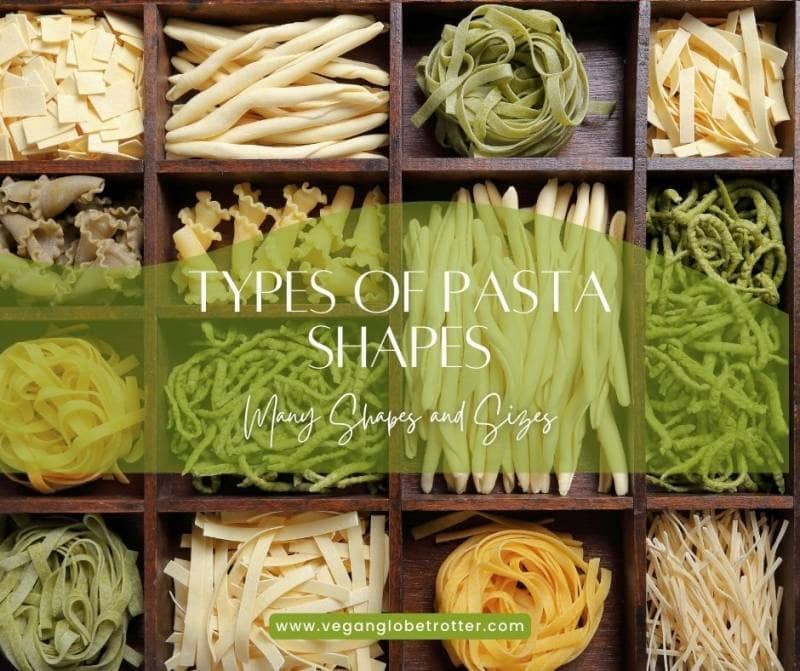
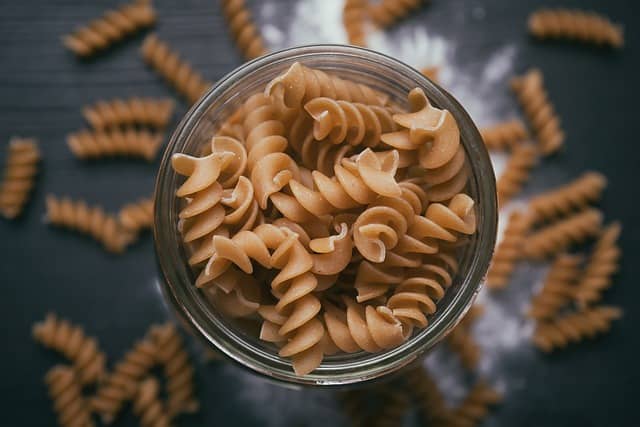

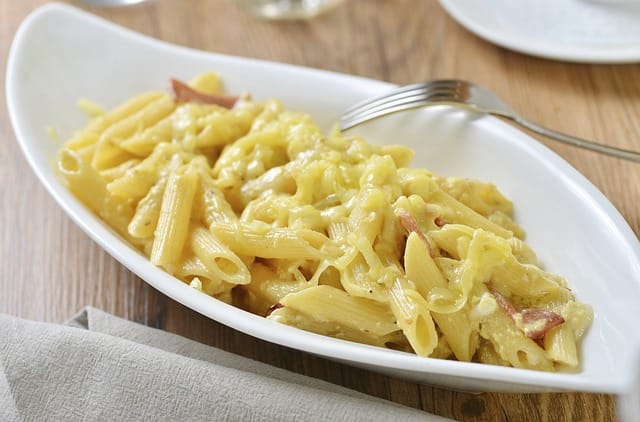
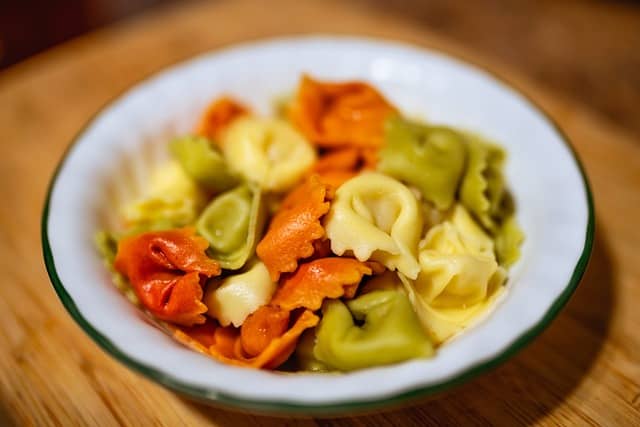
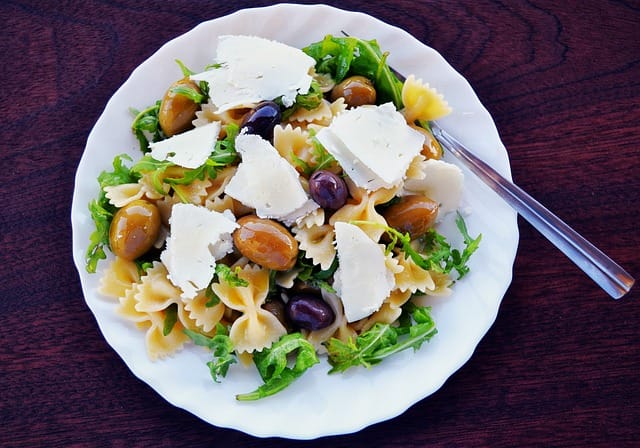
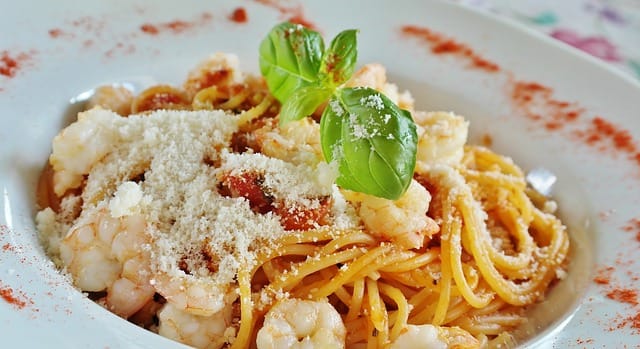

Don't miss out
when new recipes and information are added!
Join our newsletter for free recipes,
healthy living inspiration, and special offers
You have Successfully Subscribed!